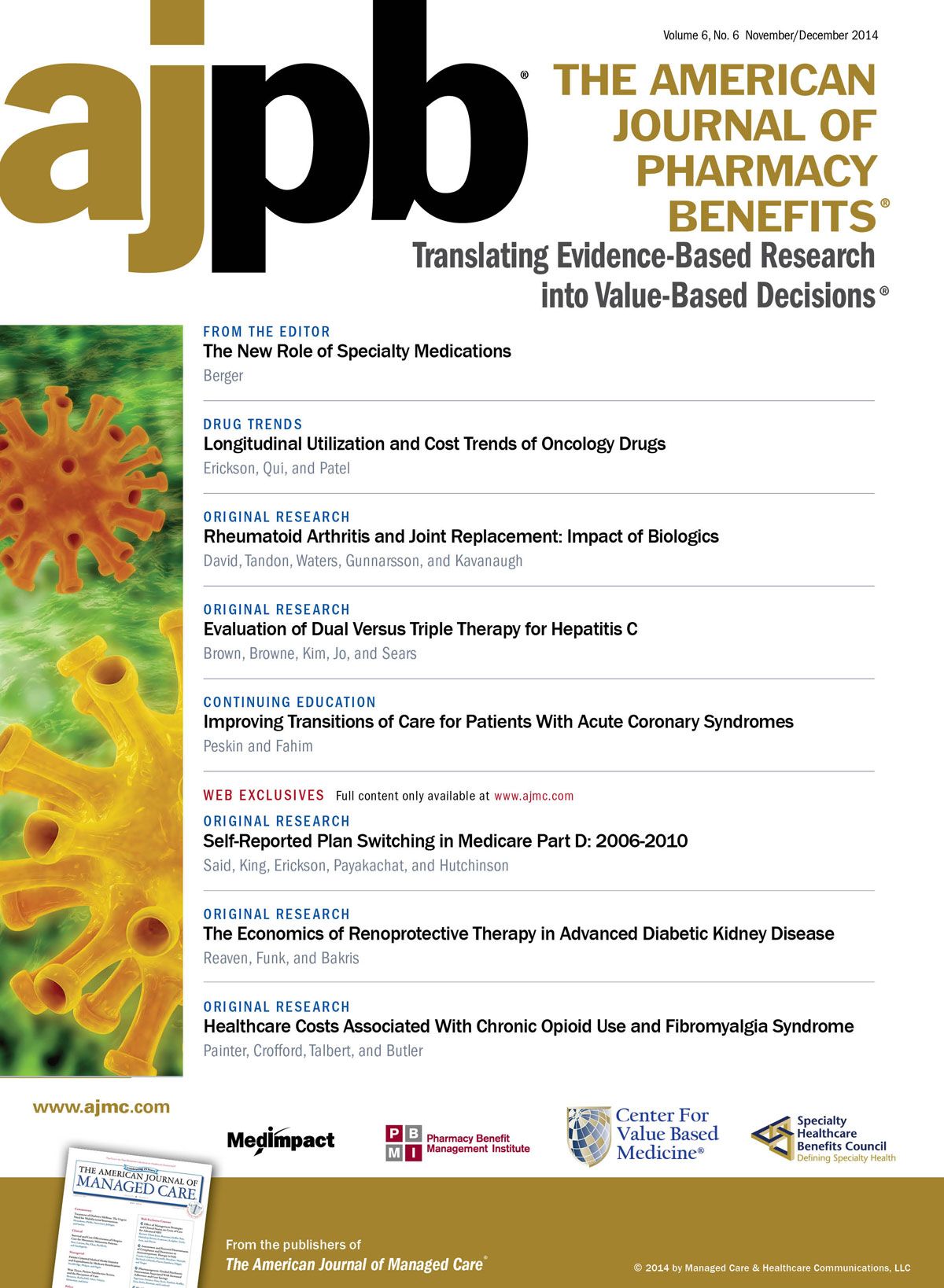Publication
Article
AJPB® Translating Evidence-Based Research Into Value-Based Decisions®
Making the 2016 Marketplace More Patient Focused
The time is now to develop a consensus on how patient needs, health plan sustainability, and government regulations intertwine to create a more patient-focused insurance marketplace.
The 2015 health insurance exchange enrollment period is well under way, and the patient advocacy community is working in tandem with other stakeholders to ensure that people have the information they need to select the right plan before the February 15, 2015 deadline.
Based on feedback from people with chronic diseases and disabilities, we know that patients are conscientious shoppers when it comes to health insurance. However, the patient community is also very frustrated with the process for picking a plan through the exchanges.
The National Health Council held a series of focus group meetings in Chicago, Los Angeles, and Atlanta with people diagnosed with chronic conditions who used their state exchange to purchase a health insurance plan for 2014. No matter where the focus group people lived, they shared similar experiences. They:
• Were confused about the effective date of coverage after purchasing an exchange plan. Some patients experienced effective dates that were later than anticipated.
• Were greatly concerned about provider network transparency. In general, many participants had to change doctors under their exchange plan.
• Were not familiar with the impact of formularies on accessing medications. Although most of the focus group participants looked at drug co-payments and other cost-sharing requirements when shopping for a plan, they did not fully understand the purpose of a formulary.
• Reviewed the Summary of Benefits and Coverage document when shopping for health insurance, and found the document to be straightforward and clear. Most patients, though, would welcome having a specialized calculator to help them more accurately estimate their total out-of-pocket costs before picking a plan.
It may be too late to make changes to the federally facilitated or state exchanges for the 2015 plan season that would alleviate the confusion and the exasperation experienced by consumers, but it is not too early to begin advocating for enhancements for the 2016 cycle. Some of these changes could be easily implemented through the regulatory process.
Protect Patients From Potential Discrimination
The usage of high cost-sharing requirements, such as deductibles, co-pays, and coinsurance, is more prevalent in exchange health insurance plans than the typical employer plans they are intended to be modeled after.1,2 The networks of providers are also typically more narrow. 3 The use of utilization management techniques, such as prior authorization and step therapy, is also more prevalent.4
These and other plan designs place a particularly high burden on people with chronic diseases and disabilities, and may be incorporated into plans as a method to discriminate against high-cost users.5 By making it more expensive and difficult to access needed medications and services, some plans are making their products less attractive to people who most need access to care.
Policies should be enacted to limit the usage of discriminatory plan designs that impede access to medications and other medical services, and more thorough reviews of plans must be conducted by the federal government and state regulators. We also need the federal government to conduct stronger reviews of provider networks across a variety of specialties to ensure that people with complex health conditions have access to appropriate care.
Provide Patients With Comprehensive Plan Details
By not having access to comprehensive information about how the plans are designed, patients find themselves selecting plans that may not meet their individual health and budget needs.
The exchanges should require each qualified health plan (QHP) to produce a single drug formulary that includes all pharmacy, provider-administered medical benefit, and specialty drugs, and to make the formulary easily accessible on a publicly available website. The exchanges should also require plans to provide specific information about drug tier placement and cost-sharing requirements, and indicate which drugs are subject to utilization management. This information could be provided on the Internet, along with links to more detailed explanations.
In addition to providing easy-to-access and easy-to-use information about medications, QHPs should be required to create publicly available, regularly updated websites where people can access all provider network details.
To help patients do a better job of comparison shopping, the exchanges could go one step further and require QHPs to present their formulary and provider network information using a standardized format so that people can more accurately conduct a side-by-side review of available plans. Standardizing plan materials will also aid health insurance exchanges in creating tools for people to do comparison shopping.
Ensure Continuity of Care for People Switching Plans
In addition to financial and information barriers, people with chronic conditions face other obstacles to accessing care when they change health plans. For example, exchanges must ensure that patients are able to receive transition drug fills for specific medications that work for them. There should be a provision for grandfathering in their physicians and other providers as “in-network” for a set period of time; and their previously obtained prior authorization for treatments, step therapy, and exceptions processes should be honored. Exchanges need to establish continuity of care requirements, such as these, to protect enrollees as they switch plans.
The recommendations I’ve listed above are just a few ideas for enhancing the exchanges. The time is now to develop a consensus on how patient needs, health plan sustainability, and government regulations intertwine to create a more patient-focused insurance marketplace. The 2016 enrollment season is just around the corner.







